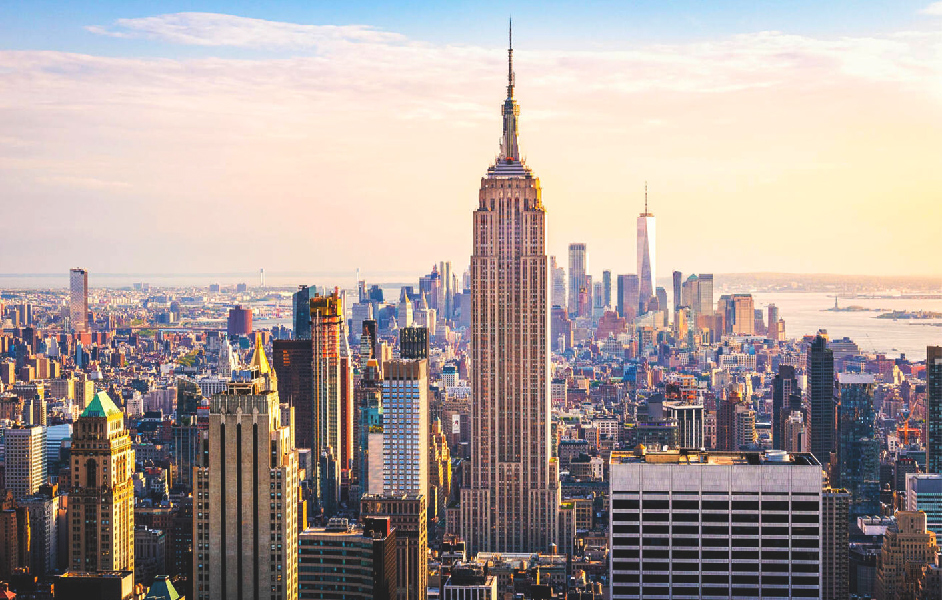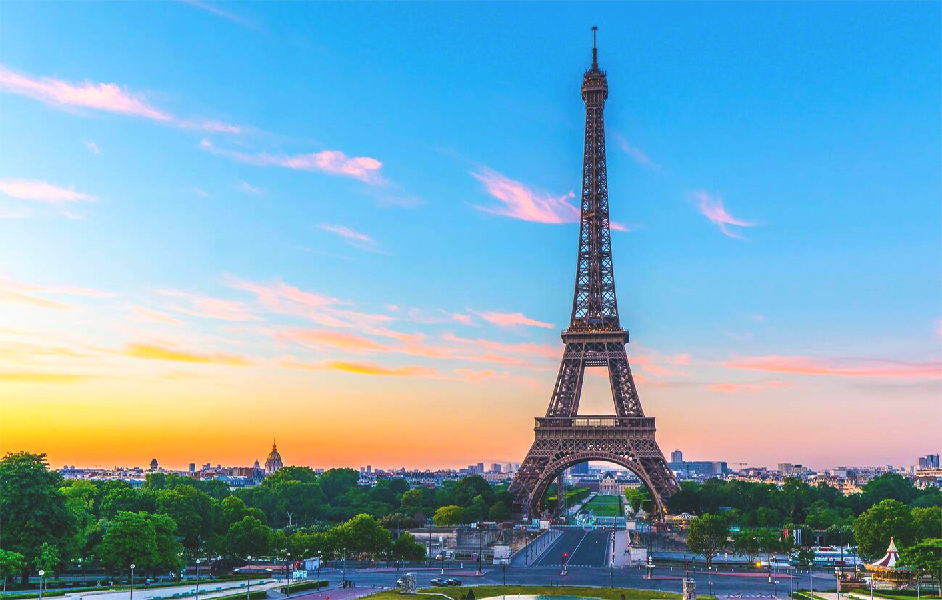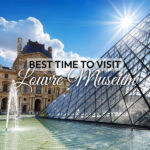The architectural wonders that have endured generations are considered, one’s thoughts are likely to turn to the Empire State Building vs the Eiffel Tower. These fitments have not only overtopped skylines but also inspired people globally. They stand there as a living testimony of human resourcefulness, flawless engineering and artistic excellence in design. Within this discussion, there will be an analysis of the origins of these landmarks, their similarities and differences as well as their significance in respective areas.
Table of Contents
History and Significance of the Empire State Building

The Empire State Building, an extremely tall structure that symbolizes American aspirations, proudly stands in the middle of New York City. It is a building that began to be constructed in the early 20th century, a period characterized by a fierce race for the construction of the tallest skyscraper worldwide. As one marvel of its time, it was constructed within only one year and 45 days thus serving as evidence that innovation in American ethos had been marked with the can-do spirit.
Its completion not only made it taller than other buildings but also turned it into an expression of hope during the Great Depression which indicated that even during tough times America could still look up—literally. The Art Deco design of this building featured geometric patterns and symmetrical forms that best described its modern look hence making it unique over time.
Additionally, The Empire State Building also has deep roots in American pop culture. King Kong mentioned above and Sleepless in Seattle are just examples of movies or books where this building served as a background for some life-changing moments on screen. This is not just visioned from physical perception; it cuts across subconscious America representing how they have weathered storms and kept reaching out for more things every generation through this building.
History and significance of the Eiffel Tower

Crossing the Atlantic will bring you to Paris with the Eiffel Tower, another man-made arrangement, which has outlasted its original purpose to become a global icon. Designed for the 1889 Exposition Universelle held in commemoration of the French Revolution’s centenary, it was initially criticized as an eyesore by some of the city’s most respected figures.
The engineer who gave his name to this tower defended his design as scientific. It was meant to be temporary but there it stands over 100 years later as a beloved symbol of the City of Lights. Beyond symbolizing France’s industrial might, the Eiffel Tower also anticipated the age of iron and steel that were revolutionizing construction and setting the stage for contemporary skyscrapers.
Apart from leaving its footprints on modern architectural history, the Eiffel Tower played a major role in terms of science and broadcasting by becoming home to different types of radio and television transmission antennas. Its cultural influence is immense since it has inspired numerous artists, writers and filmmakers making it still one of the strongest icons representing love and romanticism associated with Paris’ art soul.
Unique features and design of the Empire State Building
By plunging into the minutiae of Empire State Building design, you will find an array of features that make it stand out. This design allows sunlight to reach the streets below, which is a clever integration of form and function. The building’s distinctive silhouette with stepped architecture narrowing as it moves upwards was not only for its beauty but also an adherence to zoning laws within the city.
The opulence of the Art Deco movement is evident in the lobby of the Empire State Building with sumptuous marble and intricate decorations that take one back in time. At that time, this skyscraper had elevators which were the fastest on earth and within no time carried tourists to observation decks giving them a never-to-be-forgotten view of New York City’s sprawl.
The Empire State Building has another key element which is sustainability in its design. Over time, environmentally- friendly renovations have been done to it like fitting energy-efficient lighting fixtures and windows showing how even ancient grandeur can confirm modern-era conservationist ideals.
Unique features and design of the Eiffel Tower
Just imagine stepping away from the noisy streets of New York and entering the Champ de Mars in Paris to look up at the Eiffel Tower’s complicated lattice. By its time, it was a revolutionary design because its ironwork showed both the aesthetic appeal and possibilities of using metal as a major construction material. It has four massive arched feet that hold it down on the ground whereas the rest of the structure narrows down gracefully into thin air.
The design of the Eiffel Tower is not only beautiful but also an engineering wonder. The iron framework is built to bear both people and iron weight but also withstand wind pressure. Gustave Eiffel through empirical and graphical methods calculated shapes for this structure enabling it to resist wind pressures hence ensuring that even strong gales can make it move a few inches only.
As you go up taking either stairs or lifts, there is an impression that one is enclosed by fragile solid bones made of iron. This transparent form makes it possible for Parisians to have an open view of their cityscape from any part of the tower which makes it unique among all other monuments around the globe.
Height and structural comparisons
The Empire State Building and The Eiffel Tower are very different in height and structure. Empire State Building is towering at 1454ft tall including its antenna, which made it the tallest building in the world upon its completion. This record remained unbroken for almost 40 years until the erection of the North Tower of the World Trade Center in 1971. The steel framework of the building was securely anchored into the bedrock, ensuring that stability would be maintained for a colossal edifice of this nature.
Otherwise, the Eiffel Tower reaches only 1083 feet high with antennas included. It may not have competed with the Empire State Building by pure height but an open lattice wrought iron design that it had was groundbreaking for its time and served as an underpinning for future skyscrapers. These four pillars spread outwards at their base to distribute the weight of the structure which were unique concepts towards the end of that century and remain outstanding even today.
However, comparing these two structures is not merely about who towers highest in the sky but also about innovation and engineering achievements that made each possible in their respective manners. Traditional style skyscraper plan of the Empire State Building on one side, while the pioneering iron latticework of the Eiffel Tower represents the epitome of architectural achievement during their period respectively.
It is not only about the one that ascends more into the clouds; but also innovation and engineering breakthroughs that made it possible for them to have such heights. The Empire State Building’s typical skyscraper design and Eiffel Tower’s revolutionary iron lattice work are both examples of exceptional architectural feats in their heydays.
Cultural and iconic status of the Empire State Building
The Empire State Building is culturally and iconically as towering as its steel frame. It symbolizes not only the New York City and America but also a unique essence of a place. This site has been at the center of over 250 films, thus making it synonymous with New York for being a thriving metropolis and a point of dreams for the entire globe.
The Tower, which changes color on holidays, events and organizations’ anniversaries, has also been an expressive canvas. This daily metamorphosis is more than just lighting; it is like an ongoing dialogue between the city itself and everywhere else by mirror reflecting their combined emotions and joys.
This building’s viewing platform has witnessed many romantic proposals: a spot where both visitors and residents can break free from a fast-track life in New York City to have an unobstructed view of this urban landscape spread out beneath them. This experience confirms that the Empire State Building is not just an architectural wonder but also a place where individual lives happen with public memories.
Cultural and iconic status of the Eiffel Tower
The Eiffel Tower is as much a cultural phenomenon as its American counterpart, far transcending its status as a mere structure. Paris’ monument of the heart, this symbol of French gracefulness and engineering acumen is found in countless souvenirs and recognized worldwide like France itself.
The Eiffel Tower has golden lights on it all year round that sparkle for 5 minutes every hour on the hour at night creating an enchanting magical experience for those who behold it. This nightly illumination is not simply a way to brighten up the area; it’s a performance that captures love and beauty of Paris.
Moreover, the Eiffel Tower acts as an arena for many cultural activities such as concerts and exhibitions making it part of the city’s living culture. There have been many important moments at its platforms – first visit to Paris, kiss between lovers, pondering upon its history by oneself. The tower does not only stand there to remind us about past events but actively participates in the present thus nourishing Parisian cultural life too.
Tourist attractions and experiences at the Empire State Building
When you go to Empire State Building, be ready for something more than just a trip up an elevator to some high viewpoint. The newly renovated observatories on the 86th and 102nd floors of the building provide visitors with an immersive experience through exhibits that give insights on the construction, history and social significance of the landmark. You are not just watching but participating in the narrative of the building.
The highest open-air observation deck in New York City is located here, at 86th Floor Observatory. Here, you can feel a breeze and enjoy panoramic views of New York City’s grid and beyond. Binoculars are available for landmarks zooming-in while it remains accessible until late at night thus allowing for great night time sights.
For those who would like more details about it, “Dare to Dream” exhibit at Empire State Building showcases original documents, photographs, and construction notes which help bring alive this story of its engineering and construction. It is a chance to go back in time and appreciate the determination and commitment that made such a significant piece of art possible.
Tourist attractions and experiences at the Eiffel Tower
The Eiffel Tower is an adventure that should not be limited to just sightseeing. There are three ways of reaching the top of this tower; you can use a lift, stairway up to the second floor or climb all the way to the top if you are daring enough. Nevertheless, each has a different experience and view of how intricately structured the iron tower is and its view over Paris.
On these two levels are also exhibits, a glass floor where you look straight down and even Michelin-starred restaurant Le Jules Verne for fine dining with an unmatched bird’s-eye-view. The second level engages historical film experience on this edifice which provides background to your visit.
Reaching the peak is something everyone wishes for in life since it gives marvelous sights of Paris. On the other hand, at the summit there is Gustave Eiffel’s office that has been restored back to its original state thus offering a glance into his thinking process behind building such a structure. Sipping champagne from the bar on the topmost floor while gazing at this city epitomizes Paris’ romanticism among other things.
Empire State Building vs Eiffel Tower: Which is more popular?
These two skyscrapers are a great attraction site to tourists all over the world and have played host to many cultural scenes. Such buildings are part of our popular culture; who could forget King Kong climbing up the Empire State Building or Eiffel Tower sparkling at Paris night? But do you know more about these famous edifications? This article is a gateway to discovering details about their history, architecture and rich heritage.
Each structure represents its own epoch with ambitions and desires projected by its builders. As you read further, think not just of how they changed horizons but also affected human souls. How is it that these structures still manage to mesmerize us? Well, let’s find out by exploring their backgrounds.
It can be difficult to gauge popularity accurately especially when it comes to comparing the most visited landmarks globally. The Empire State Building as well as Eiffel Tower get millions of tourists on year basis because of their historicity, architectural designs and experiences one can enjoy there. However, it also depends on the time of the year, trends in travel and current affairs.
Statistically speaking, annual visitor figures have shown that the Eiffel Tower typically edges out its counterpart – New York City’s Empire State Building – which may not surprise given Paris’ standing as a favorite destination for sightseers. Nonetheless, popularity is not always about numbers; it is about what stories visitors carry away from these sites and eventually spread across various communities. Thousands of people adore each building as there are numerous followers of both; hence making popularity debatable.
Empire State Building vs Eiffel Tower: Which is more impressive?
Determining which is more impressive between the Empire State Building and the Eiffel Tower is subjective. There are those who view the Empire State Building as an icon of architectural achievement for its art Deco design and its place in the New York skyline. Others might be convinced by the newness of Eiffel Tower’s designs alongside with Parisian essence.
Undoubtedly, both structures stand as masterpieces themselves. These were built at different times with distinct purposes in mind that reflect the dreams and technological breakthroughs of their respective time periods. They have achieved iconic status beyond their physical dimensions; their legacies continue to awe architects, artists, tourists from all corners of this world alike.
Think of what they mean when you are amazed by the glory of these legendary buildings: the unbowed spirit of man and a constant desire to move forward. The Empire State Building vs Eiffel Tower debate is one that reminds us that in architecture, there is not only one wonder but each has its unique tale. It is this multitude of stories that adds value to our world and keeps us hooked with our eyes fixed on the skies.
FAQ
Is the Empire State Building higher than the Eiffel Tower?
The height of the Empire State Building is 1,250 feet or 381 meters. The Eiffel Tower is 1,083 feet tall or 330 meters without its antenna and its original flagpole because its height reduces to 987 feet, three inches (301 meters).
Which is older the Eiffel Tower or the Empire State Building?
It was first built in 1889, and it was finished for the 1889 Exposition Universelle that marked the 100th anniversary of the French Revolution.
Conclusion
The history, architecture and cultural relevance of Empire State Building vs Eiffel Tower takes you through the everlasting charm of architectural wonders. More than steel and iron, these structures are inscriptions that cities are made of which symbolize human inventiveness and an unyielding spirit.
If you are thus able to look on in awe at the Empire State Building’s art deco splendor or gaze up into the iron lattice of the Eiffel Tower, you’re contributing to decades long tradition. In both cases they remain as proud proof that their corresponding eras were not only attractive but a time when architects, engineers and workers had dreams for buildings like those ever before lived in history.




